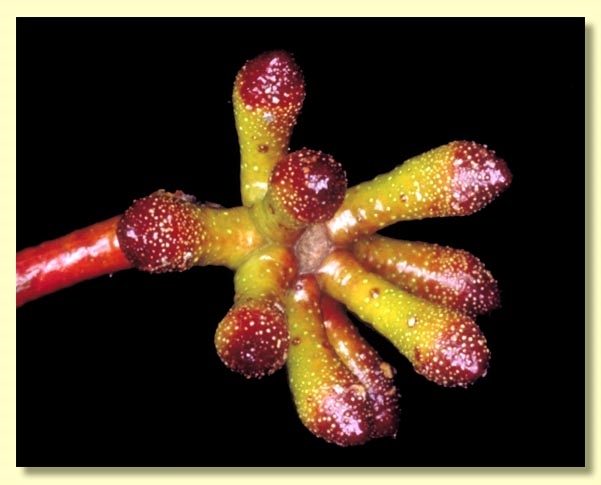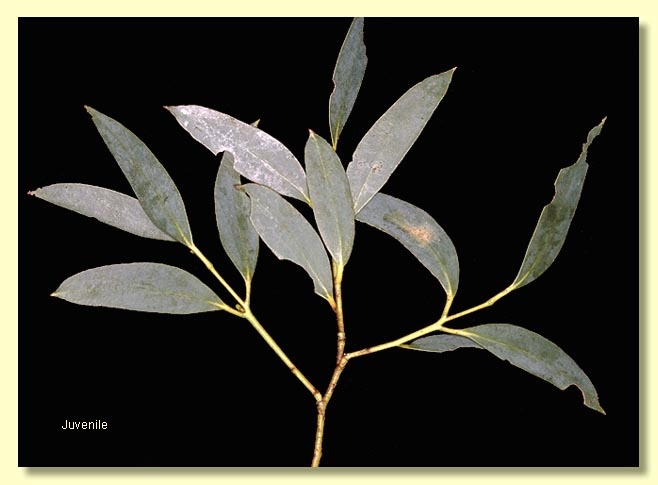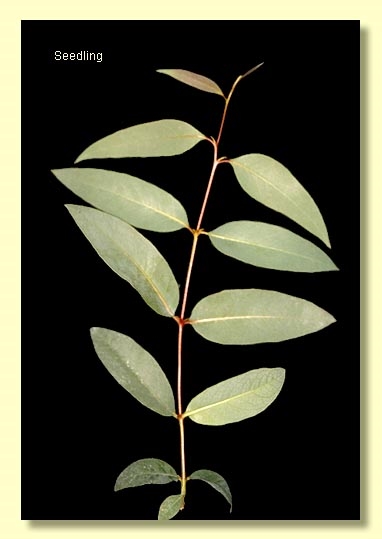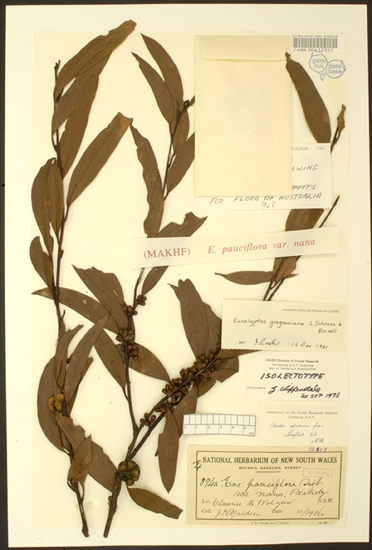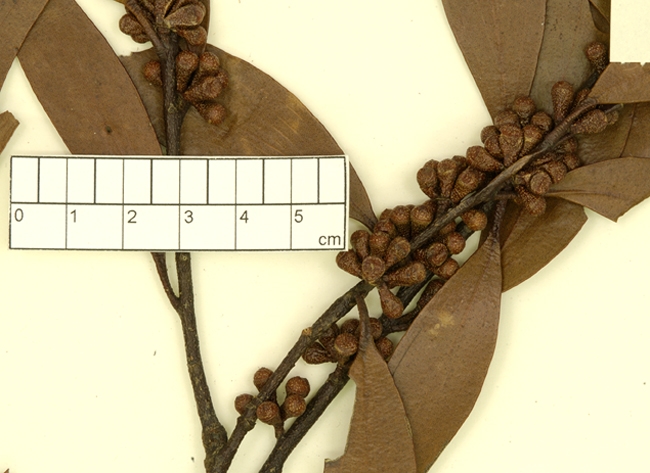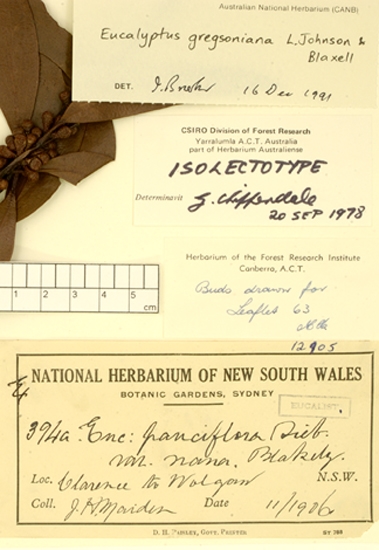Euclid - Online edition
Eucalyptus gregsoniana
Eucalyptus | Eucalyptus | Cineraceae | Pauciflorae
Bark smooth, light grey to white with patches of yellow, pink or pale brown.
Juvenile growth (coppice or field seedlings to 50 cm): stem rounded in cross-section, warty or smooth; juvenile leaves opposite and subsessile for 5 or 6 pairs, then alternate, petiolate, lanceolate to falcate, 5.5–13 cm long, 1–4.5 cm wide, base tapering to petiole, dull, grey-green.
Adult leaves alternate, petiole 0.5–1.7 cm long; blade lanceolate to falcate, 5.5–12 cm long, 0.8–2.5 cm wide, base oblique or tapering to petiole, concolorous, glossy, green, parallel-veined, reticulation sparse or absent, intramarginal vein parallel to and well removed from margin, oil glands island.
Inflorescence axillary unbranched, peduncles 0.2–1 cm long, buds 7, 9 or 11 per umbel, rarely sessile, more usually on pedicels to 0.3 cm long. Mature buds clavate, 0.4–0.5 cm long, 0.3–0.4 cm wide, green to yellow or red, smooth or warty, scar absent, operculum rounded to conical, stamens irregularly flexed or inflexed, anthers reniform to cordate, versatile, dorsifixed, dehiscing by confluent slits, style long, stigma blunt or tapered, locules 3 or 4, the placentae each with 2 vertical ovule rows. Flowers white.
Fruit sessile or on pedicels to 0.3 cm long, cup-shaped, hemispherical or obconical, 0.6–0.8 cm long, 0.6–0.9 cm wide, disc raised slightly, level or descending, if raised then annular, valves 3 or 4, near rim level.
Seeds dark black to black-brown, 1–1.5 mm long, pyramidal or obliquely pyramidal, dorsal surface smooth, hilum terminal.
Cultivated seedlings (measured at ca node 10): cotyledons reniform; stems rounded in cross-section; leaves shortly petiolate, opposite, ovate-elliptic and discolorous for 5 or 6 nodes, becoming petiolate, alternate, ovate-lanceolate, 9–13 cm long, 2–4.5 cm wide, base tapering, margin entire, apex pointed, dull, concolorous, blue-green to grey-green.
Flowering has been recorded in November and December.
A small mallee of disjunct distribution north-west of Newnes Junction in the Blue Mountains west of Sydney and further south near Mongarlowe on the Southern Tablelands of New South Wales.
E. gregsoniana clearly belongs to the snow gums by the longitudinal venation of the adult leaves and is distinguished from the more widespread E. pauciflora by the habit, narrow grey-green juvenile leaves and smaller buds and fruit. A third species of snow-gum, E. lacrimans, differs in being a slender tree with a very open, pendulous crown.
Eucalyptus gregsoniana belongs in subgenus Eucalyptus section Cineraceae series Pauciflorae having the following characters: cotyledons reniform, juvenile leaves alternate, bluish to glaucous, adult leaves with side-veins parallel to the midrib, single axillary inflorescences with buds in clusters of seven to eleven, buds with single operculum, usually inflexed stamens, reniform anthers, ovules in two rows, and seeds more or less pyramidal. The species in series Pauciflorae are E. pauciflora (with 5 subspecies), E. lacrimans and E. gregsoniana and their differences are discussed above.




